Rotary die-cutting technology has revolutionized industrial manufacturing with its innovative applications and development trends. This cutting-edge technology enables precision cutting of various materials at high speed, making it an integral part of modern manufacturing processes. From packaging and labeling to automotive and electronics industries, rotary die-cutting has found versatile applications, ensuring cost-effective production and exceptional product quality.
Innovative developments in rotary die-cutting technology have further expanded its capabilities, allowing for intricate and precise cutting of even the most complex shapes and designs. The integration of digital technology and automation has streamlined the manufacturing process, enhancing efficiency and productivity while maintaining the highest standards of accuracy and consistency.
As manufacturing continues to evolve, the development trends in rotary die-cutting technology are focused on maximizing flexibility, scalability, and adaptability. From advanced materials to custom designs, this technology is constantly pushing the boundaries of what is possible in industrial manufacturing. With its ability to meet the demands of a rapidly changing market, rotary die-cutting technology is poised to play a crucial role in driving innovation and shaping the future of industrial manufacturing.
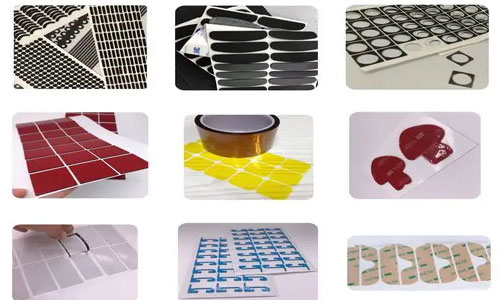
In the die-cutting process we conduct in our daily work, our understanding is limited to knowing the product structure, material, name, and applicable range of the die-cut parts being processed. However, we are not clear about the classification and functional use of die-cut products.
When a mobile phone is disassembled, what die-cut parts do we know about? In the disassembly of electronic digital products, we may only be aware of a few die-cut parts within the digital product, without understanding all the supplemental functional devices. Therefore, in the process of receiving orders, we are unclear about what we can do and what we can do only partially.
Here, this article provides a preliminary classification of the terminal usage functions of die-cut parts, in the hope of providing enlightenment for engineers who are about to engage in die-cut processing and enter this industry.
Generally speaking, the classification of die-cut parts and accessories is mainly carried out from two aspects. The first aspect primarily categorizes die-cut parts and accessories based on the application of the main materials, while the second categorizes die-cut parts based on their terminal functions. In terms of die-cut parts in the common processing range of 3C electronic accessories, the die-cutting classification mainly includes the following aspects:
>>>>
Functional accessories for protection and cleaning
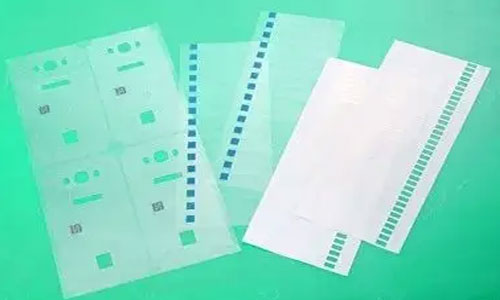
Local back glue protective film accessories
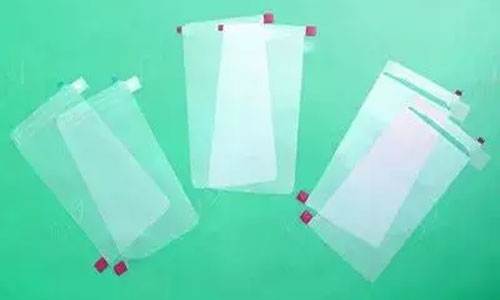
Protection film processing accessories
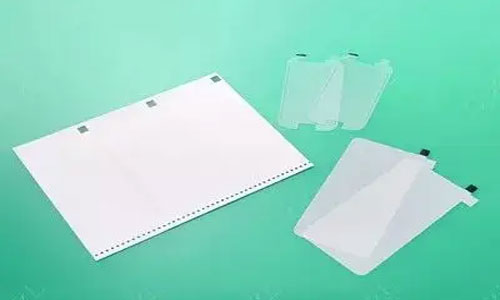
Enhancing light diffusion accessories
Function: In the production process of components such as mobile phones or optoelectronic modules, these accessories protect and clean the products or components, reducing the need for cleaning. Common functional accessories for protection and cleaning include touch screen protective film and inner protective film for the camera.
>>>>
Functional accessories for adhesive fixation
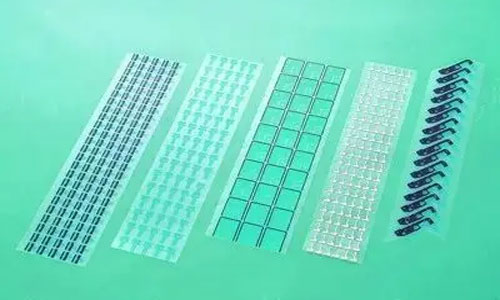
Double-sided back glue used for fixation
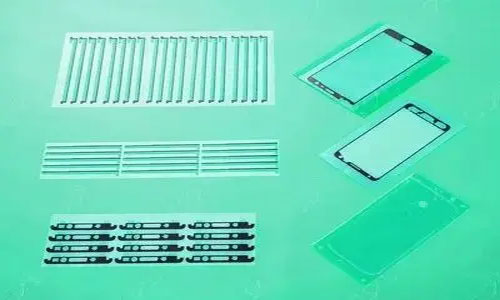
Local single-sided back glue fixation strip accessories

Adhesive for port openings
Function: In the trend of lightweight design for consumer electronics such as mobile phones, these accessories replace traditional mechanical fasteners such as rivets and screws, achieving a physical connection and fixation between components, making the product lighter and better sealed.
>>>>
Functional accessories for dust prevention
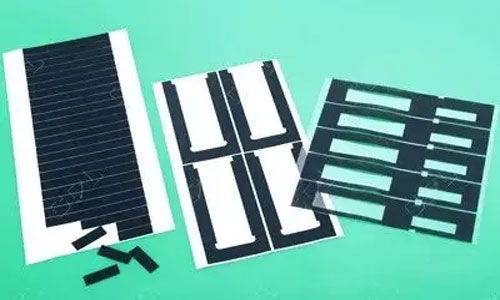
Dust cloth
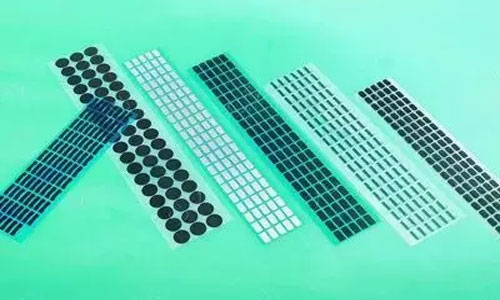
Speaker grille
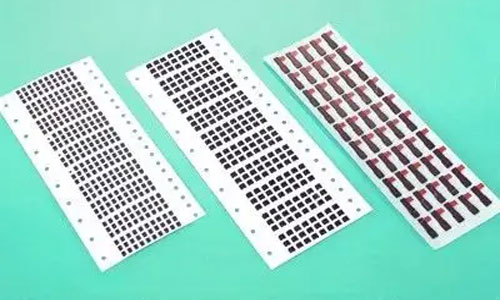
Microphone waterproof cover, etc.
Function: To prevent dust and other foreign matter from entering or contacting the product, causing sound distortion, commonly used in the speaker components of products. Common functional accessories for dust prevention include nylon mesh, non-woven fabric, metal mesh, and PET mesh.
>>>>
Functional accessories for buffering
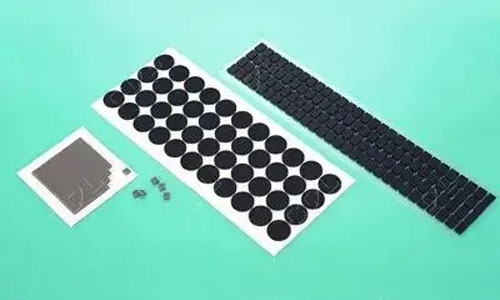
EVA shock pad
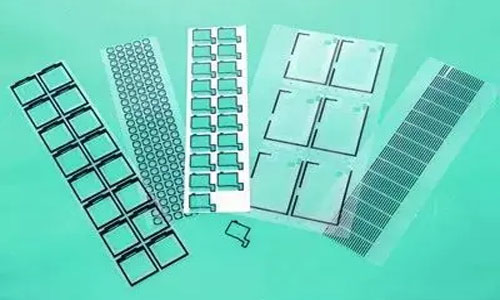
Buffering and sealing foam
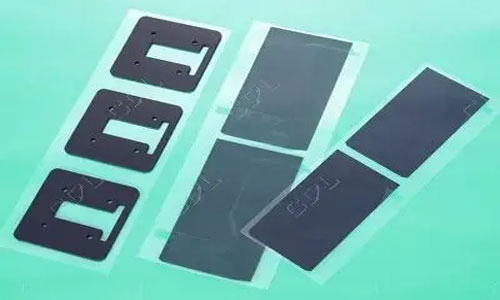
Shock absorption foam
Function: To avoid or reduce the transmission of vibration between components, and sometimes also serve sealing, dustproof, and sound insulation functions. These products usually have a certain elasticity and undergo moderate deformation when subjected to force.
>>>>
Functional accessories for conduction/insulation
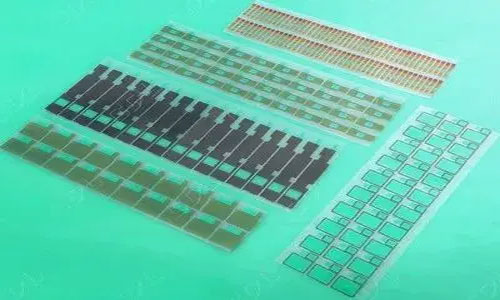
Conductive fabric/conductive adhesive accessories
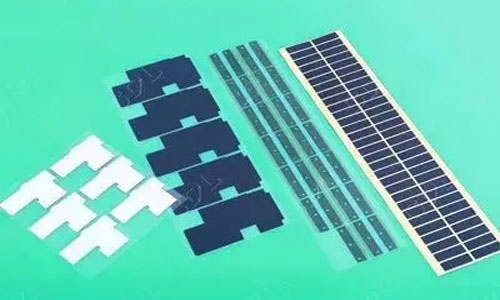
Conductive foam/insulation foam accessories
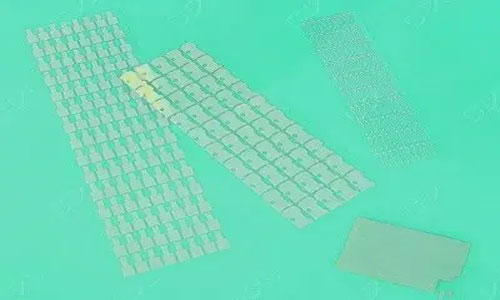
Insulation adhesive accessories
Function: To achieve isolation/connection and insulation/conduction between electronic components, in order to prevent short circuits and faults between adjacent components. Common functional accessories for conduction/insulation include PC sheets, PET sheets, insulating paper, Mylar sheets, insulating tapes, conductive fabric, and conductive adhesive.
>>>>
Functional accessories for heat dissipation
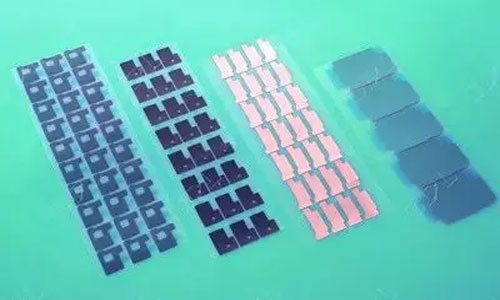
Copper foil heat dissipation accessories
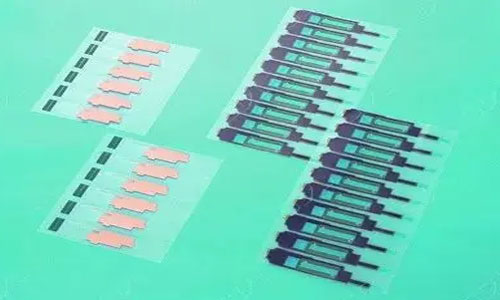
Copper foil heat dissipation accessories
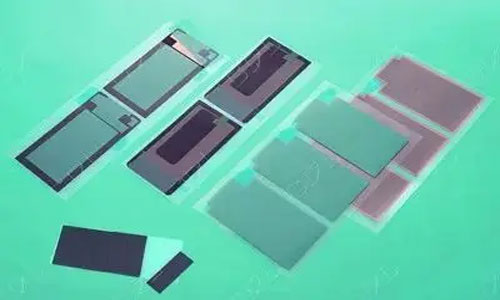
Copper foil + graphite sheet heat dissipation accessories
Function: To facilitate the transfer and dispersal of heat generated during the operation of electronic components, preventing the product from overheating and affecting its normal function and lifespan. These functional accessories have the characteristics of high heat dissipation efficiency, small space occupation, and light weight.
>>>>
Functional accessories for shielding
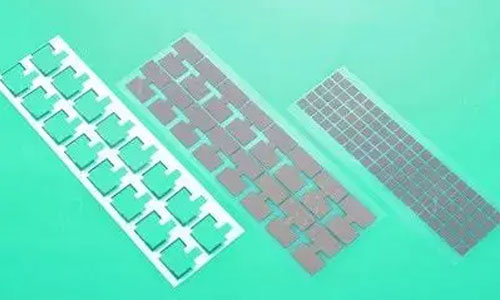
Shielding electronic accessories
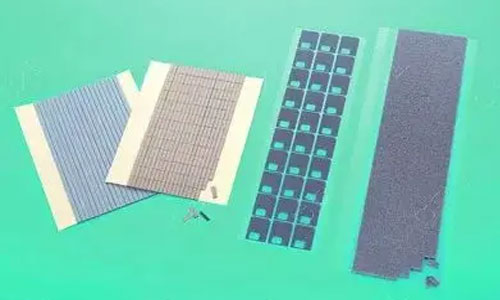
Absorbent silicone rubber shielding accessories
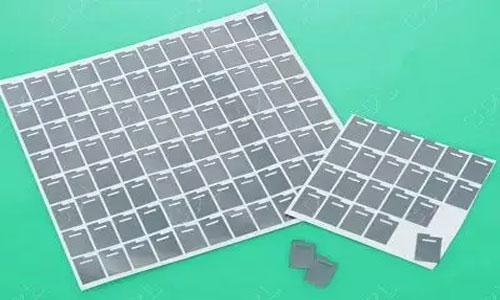
Absorbent material accessories
Function: To isolate and eliminate the interference of electromagnetic waves on other electronic components, thereby controlling the effect of electric fields, magnetic fields, and electromagnetic waves from one area to another, affecting the normal operation of the electronic components.
>>>>
Functional accessories for brand protection
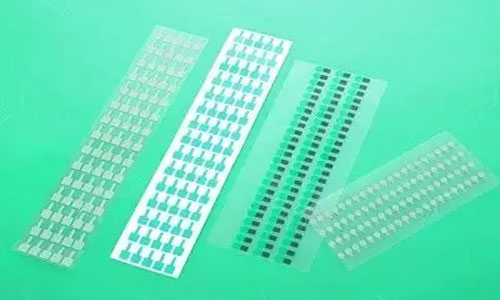
Mylar protective film handles
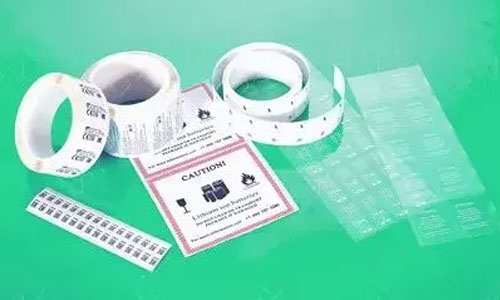
Double-label printing accessories
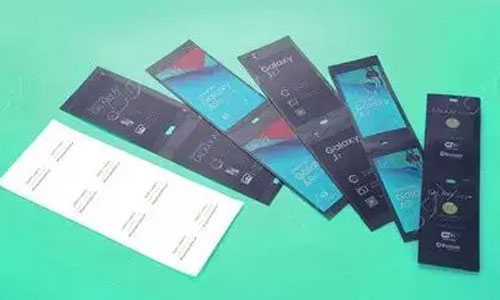
Label hanging accessories
Function: To achieve functions such as dust prevention, scratch resistance, anti-glare, and explosion protection. If the content printed can also serve as identification, promotion, and guidance, these accessories are usually used on various surfaces of mobile phones and their electronic components. Common examples include lens protection film, camera protection film, battery cover protection film, and screen explosion-proof film.
>>>>
Silk screen labels, nameplate accessories

Silk screen panels, button accessories
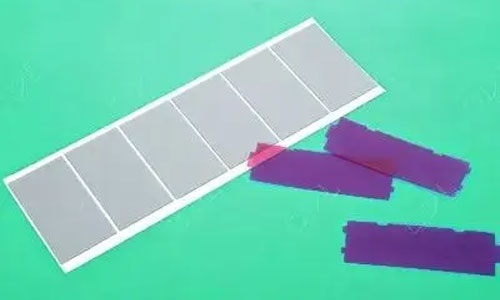
Nameplate Mylar
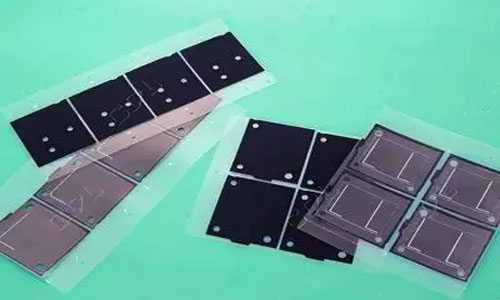
Nameplate back glue accessories
Function: To indicate and explain the brand, model, performance parameters, country of origin, warnings, and anti-counterfeiting measures of a product, usually used on the exterior of the product. Common examples include electronic labels and functional nameplates.
>>>>
Reinforcement and structural functional hardware accessories
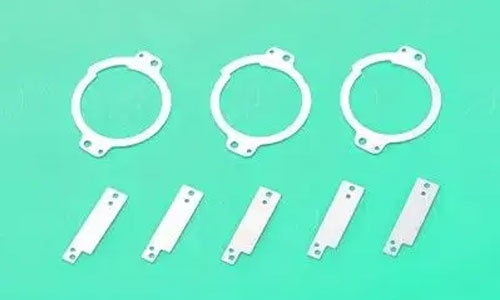
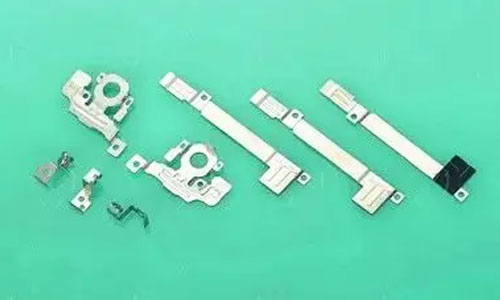
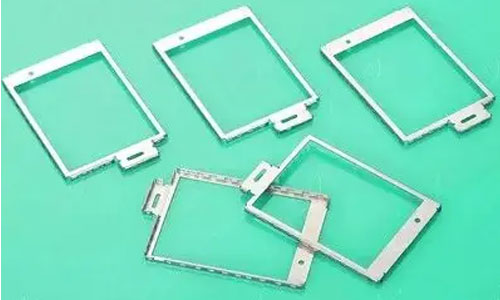
Hardware components
Function: Widely used in FPC flexible circuit boards to address the problem of insufficient mechanical strength of flexible circuit boards, increase the strength of plug-in positions, and facilitate the overall assembly of products. They can also achieve the function of induction and conduction.
>>>>
Packaging box accessories
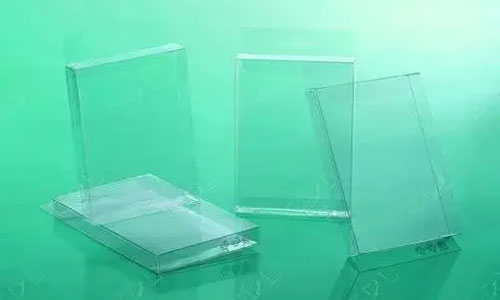
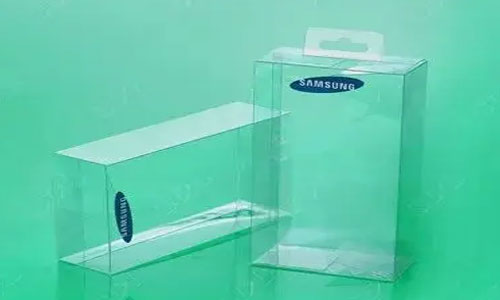
PC packaging box accessories
Compared with traditional paper boxes, plastic boxes are environmentally friendly, non-toxic, have high transparency, and provide a more intuitive display of the packaged products, effectively enhancing the packaging grade of the products. Common products include packaging plastic boxes made of PET, APET, and PP materials.
The above categorization and functional accessory classification are specific to electronic accessories for mobile phones in the die-cutting industry. In our daily work processes, we can focus on the various functions provided by these accessories to understand their operating characteristics, their characteristic requirements, and their use standards. This will facilitate a clear understanding of the operational requirements and specific knowledge of die-cutting processes, thus avoiding production inertia and facilitating problem-solving.
Meanwhile, in the entire die-cutting industry, there are many other classifications for die-cut parts, such as the classification of magnetic material functional accessories in the field of wireless charging, the classification of medical adhesive bandages and labels in the medical industry, and the classification of common accessories in daily chemical packaging. In the subsequent common knowledge, we will gradually popularize these classifications. Let's look forward to it together.
Contact: Pamela
Phone: +86 189 6365 3253
E-mail: info@industryprocess.com
Whatsapp:+86 189 6365 3253
Add: Yajing Industrial Park, No. 59 Shuangjing Street, Weiting Town, Suzhou Industrial Park
We chat
